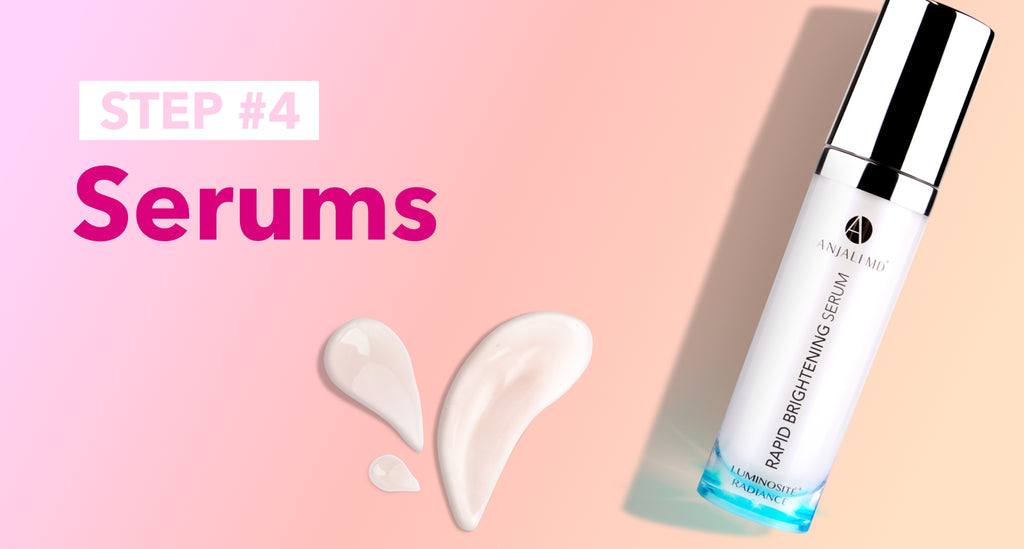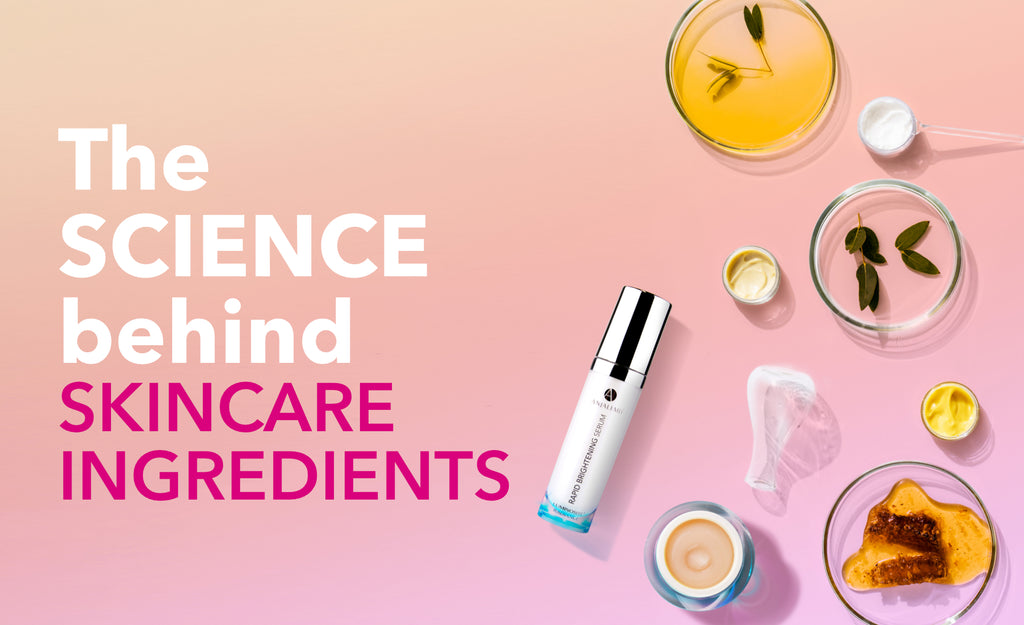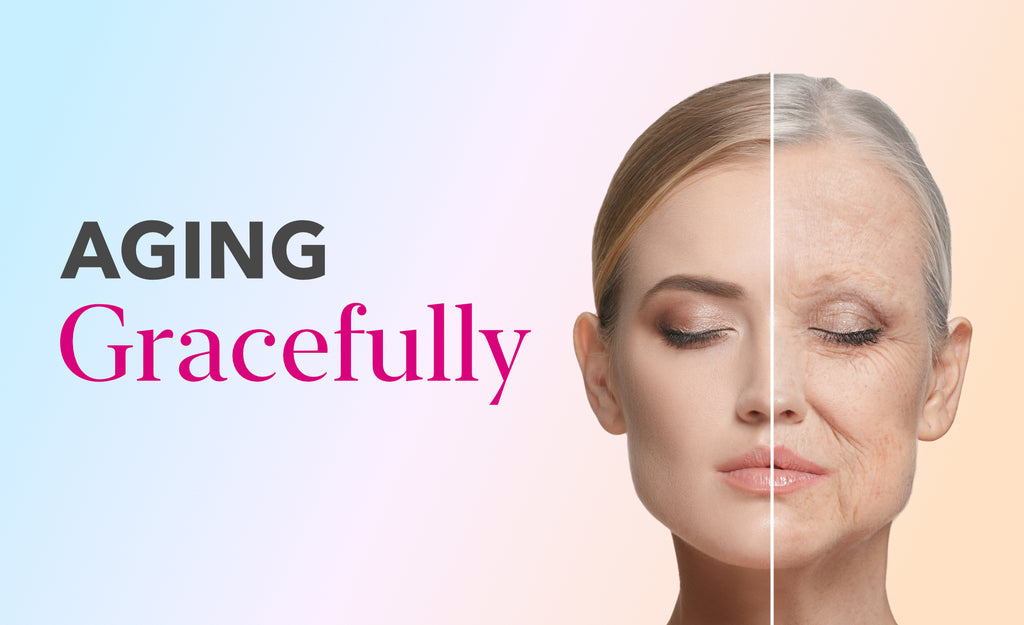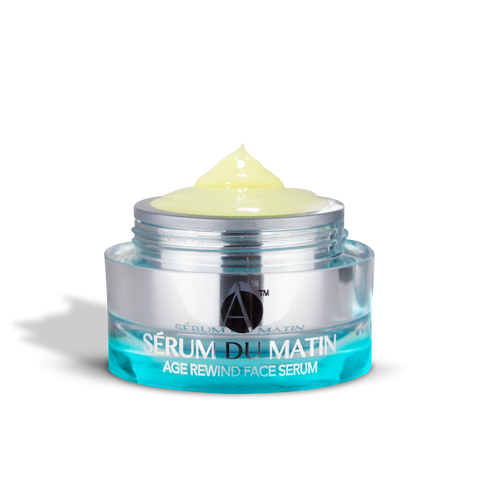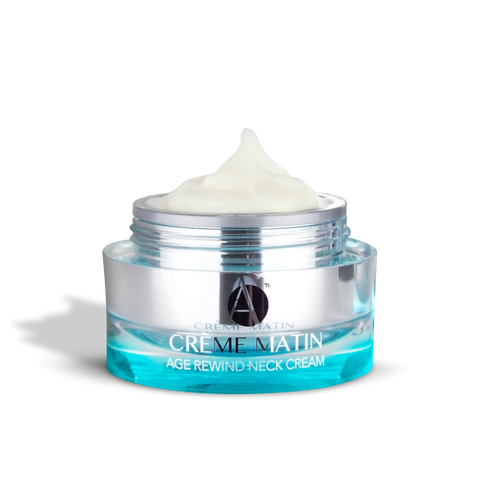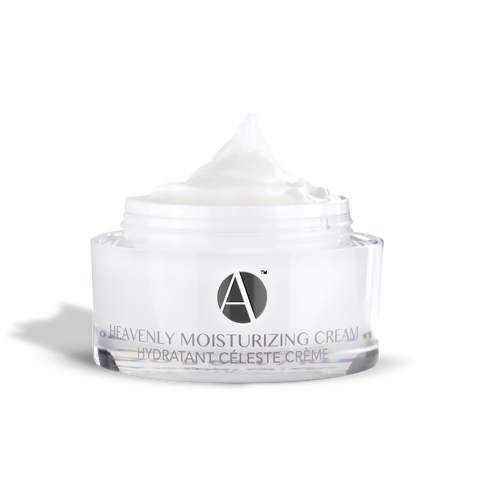How to Build a Skincare Routine: Tips for Beginners

Build the Best Skincare Routine for Your Skincare Needs.
Taking care of your skin is an essential part of self-care. A consistent skincare routine can help you achieve healthy, radiant skin that you can feel confident in. But if you're new to skincare, it can be overwhelming to figure out where to start. In this article, we'll provide tips for building a skincare routine that works for you.
Step #1 - Determine Your Skin Type
Before you can build a skincare routine, it's important to identify your skin type. This will help you choose products that are tailored to your specific needs. There are five main skin types: normal, oily, dry, combination, and sensitive. Here's how to identify yours:
|
Oily skin |
Your skin is shiny and produces excess oil, particularly in the T-zone (forehead, nose, and chin). |
|
Dry skin |
Your skin feels tight and may be flaky or rough to the touch. |
|
Combination skin |
You have oily skin in the T-zone and dry skin on the cheeks and other areas. |
|
Sensitive skin |
Your skin is easily irritated and may be prone to redness or rash. |
|
Normal skin |
Your skin remains stable everyday and is not oily, dry or sensitive. |
Don’t know your skin type? Check out our article: What’s my Skin Type?
Once you've identified your skin type, you can choose products that are formulated for your specific needs.
Step #2 - Address Skin Concerns
Step 2 requires you to identify your personal skin concerns in building your skincare routine. It’s important to identity these concerns early. For example, if you’re concerned about wrinkles and line, you should start using anti-aging products in your late 20’s and early 30’s to prevent wrinkles and dark spots from forming.
For many people, these concerns may include dark spots, hyperpigmentation, wrinkles and acne. To address dark spots and hyperpigmentation, look for products that contain ingredients like Vitamin C, arbutin and kojic acid. These ingredients can help brighten and even out your skin tone. For wrinkles, consider adding a retinol or other anti-aging ingredients to your routine. And for acne-prone skin, look for products that contain salicylic acid or benzoyl peroxide. Remember to introduce new products slowly to your routine and pay attention to how your skin reacts. Consulting with a dermatologist can also be helpful in determining the best products and routine for your individual needs.
COMMON SKIN CONCERNS
- Acne: a skin condition that occurs when hair follicles become clogged with oil and dead skin cells, leading to the formation of pimples, blackheads and whiteheads.
- Wrinkles: lines and creases that form in the skin due to natural aging, sun damage and other factors.
- Dark Spots and Hyperpigmentation: dark patches of skin that can be caused by sun damage, acne scars, hormonal changes or certain medications.
- Dryness: a lack of moisture in the skin, which can cause flakiness, itchiness and discomfort
- Sensitivity: skin that is easily irritated by external factors like fragrance, harsh ingredients or environmental allergens.
- Rosacea: a chronic inflammatory skin condition that can cause redness, flushing and small bumps on the face.
- Eczema: a condition characterized by itchy, inflamed skin that can be caused by a variety of factors, including genetics, allergies and environmental triggers.
- Psoriasis: a chronic condition that causes the rapid buildup of skin cells, leading to thick, scaly patches on the skin.
- Melasma: a common skin condition that causes dark, patchy areas of hyperpigmentation, typically on the face, often triggered by hormonal changes.
- Aging & Fine lines: small, shallow wrinkles that can be caused by natural aging, sun exposure and other factors.
Addressing skin concerns
Be sure to explore all the ANJALI MD Skincare products and browse by concern. Many of our products are designed to treat multiple concerns with just one product.
Step #3 - Cleanse & Exfoliate
Cleansing is an essential part of any skincare routine. It helps remove dirt, oil, and makeup from your skin, preparing it for other products in your routine. Here's how to choose the right cleanser for your skin type:
CHOOSING A CLEANSER
|
Oily Skin |
Look for a gel or foam cleanser that can help control oil production. |
|
Dry skin |
Look for a cleanser that won't strip your skin of natural oils. |
|
Combination skin |
Look for a gentle, pH-balanced cleanser that won't over-dry your skin. |
|
Sensitive skin |
Look for a fragrance-free, non-irritating cleanser that won't cause redness or inflammation. |
Don’t know your skin type? Check out our article: What’s my Skin Type?
How to Cleanse
When cleansing your face, start by wetting your skin with lukewarm water. Apply a dime-sized amount of cleanser to your fingertips and gently massage it into your skin for 30-60 seconds. Rinse thoroughly with water and pat your skin dry with a clean towel.
WHAT IS EXFOLIATING
Exfoliation is the process of removing dead skin cells from the surface of your skin. This can help improve the texture and tone of your skin, and can also help prevent breakouts. This can be done by using a skincare product or a physical exfoliator like a loofah or scrub. But be mindful of what your skin can tolerate when you exfoliate. You have to decide how and how often your skin can be exfoliated, without causing irritation.
How to EXFOLIATE
When exfoliating your face, apply the product to damp skin and massage it in gently for 30-60 seconds. Rinse thoroughly with water and pat your skin dry with a clean towel.
Step #4 - Serums
After cleansing, the next step in your skincare routine is applying a serum. Serums are concentrated with active ingredients, usually in a liquid or gel. These formulas are made to quickly absorbs into the skin and gives maximal benefits. That’s why it’s a good idea to get a serum onto the skin quickly after cleansing, when your skin is extra absorbent.
Many serums are hydrating but it’s always ideal to apply a moisturizer or thicker product on next. This will add a second layer of hydration and lock in your serum.

Step #5 - Eyes
The next step in your skincare routine is dedicated to caring for the delicate skin around your eyes. The skin around your eyes is thinner and more delicate than the rest of your face, which is why it requires special attention. Eye creams and serums can help to hydrate and firm this delicate skin while also targeting specific concerns like fine lines and dark circles. Look for products that contain gentle ingredients like hyaluronic acid, Vitamin C and peptides. When applying eye cream, use your ring finger to gently tap the product into your skin, starting at the inner corner of your eye and working your way outwards. Be gentle and avoid rubbing or tugging at the delicate skin around your eyes. With consistent use, an eye skincare routine can help you achieve a more youthful and refreshed appearance.
Common eye concerns
- Fine lines and wrinkles: the delicate skin around the eyes is prone to fine lines and wrinkles due to natural aging, sun damage and other factors.
- Dark circles: these can be caused by genetics, lack of sleep, stress or aging. They can be difficult to treat.
- Bags & Puffiness: fluid accumulation under the eyes can cause puffiness, which can be exacerbated by factors like lack of sleep, allergies or salt intake.
- Dryness: the skin around the eyes is thinner and has fewer oil glands than other areas of the face, making it more prone to dryness and dehydration.
- Sensitivity: the skin around the eyes can be more sensitive than other areas of the face, and can react to harsh ingredients or irritants.
Step #6 - Moisturizing
Moisturizing is an essential step in any skincare routine, regardless of your skin type. A great moisturizer hydrates the skin, prevents dryness and flakiness, and improves the overall texture and appearance of the skin. When choosing a moisturizer, it's important to consider your skin type and any specific concerns you may have, such as dryness, sensitivity or acne-prone skin. Look for ingredients like hyaluronic acid, glycerin and ceramides, which can help to lock in moisture and improve the skin's natural barrier function. For those with oily or acne-prone skin, opt for lightweight, non-comedogenic formulas that won't clog pores. And don't forget to apply your moisturizer both in the morning and at night to keep your skin hydrated 24/7.
Step #7 - Sun Protection
Sun protection is one of the most important steps in any skincare routine, as it can help to prevent a wide range of skin concerns, including dark spots, wrinkles and skin cancer. When choosing a sunscreen, look for a broad-spectrum formula that protects against both UVA and UVB rays, and has an SPF of at least 30. Apply your sunscreen generously to all exposed areas of skin, and be sure to reapply every two hours, or more frequently if you're swimming or sweating. Don't forget to wear protective clothing and seek shade during peak sun hours as well.
If you're looking for a more convenient way to incorporate sun protection into your routine, try a moisturizer or makeup product that contains SPF. Be sure to apply enough for proper protection.
Updating Your Routine
How often should I update my skincare routine?
The frequency with which you update your skincare routine largely depends on your individual skin concerns. As a general rule, it's a good idea to evaluate and adjust your routine every six months to a year. However, if you notice sudden changes in your skin, like increased dryness or breakouts, it may be time to make adjustments sooner. Keep in mind that introducing new products to your routine should be done slowly to avoid overwhelming your skin. Consulting with a dermatologist can also be helpful in determining when and how to update your skincare routine.










